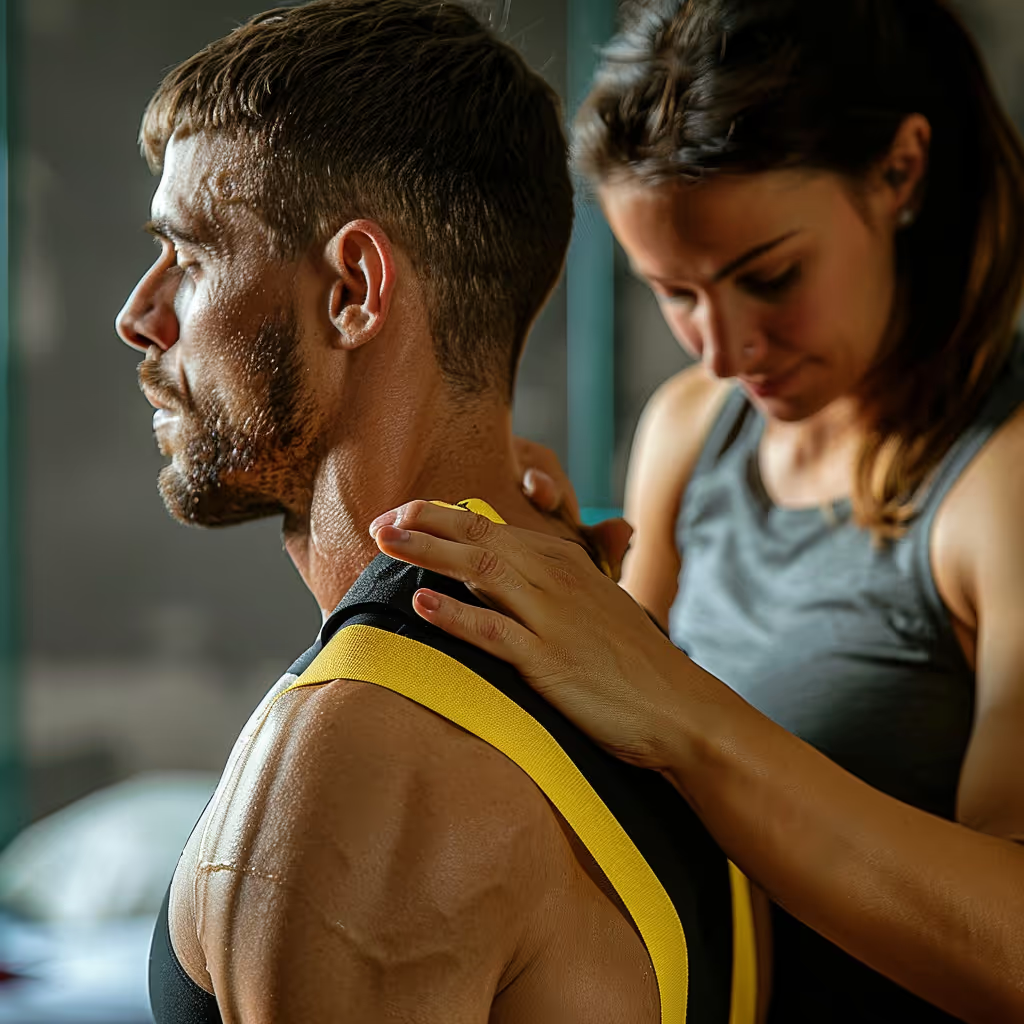Urinary incontinence
Urinary incontinence is defined as the involuntary and uncontrollable loss of urine. It is estimated that approximately 10% of Canadians of all genders, and 50% of women, will experience urinary incontinence in their lifetime. Although many people suffer from it, urinary incontinence is not normal and can be treated.
What is urinary incontinence?
Urinary incontinence is defined as the involuntary and uncontrollable loss of urine.
It is estimated that approximately 10% of Canadians of all genders, and 50% of women, will experience urinary incontinence in their lifetime.
Although many people suffer from it, urinary incontinence is not normal and can be treated.
The main types of urinary incontinence
Stress urinary incontinence occurs when the pressure inside the abdomen increases rapidly (e.g. coughing, sneezing, jumping, laughing, lifting, etc.) and the pelvic floor is not strong enough to retain urine.
Emergency urinary incontinence occurs when the bladder muscle contracts involuntarily and uncontrollably, and the pelvic floor is not strong or coordinated enough to retain urine. Leakage is preceded or accompanied by an urgent need to urinate, and can be triggered by the sound of running water, putting the key in the door on the way home, taking a shower, and so on.
Mixed urinary incontinence is a combination of the two types of incontinence mentioned above.
What causes urinary incontinence?
One of the main causes of urinary incontinence is weakened pelvic floor muscles.
Certain factors can increase the risk of urinary incontinence:
- Pregnancy and childbirth;
- Lifestyle habits (e.g. smoking, diet, sedentary lifestyle, etc.);
- High-impact sports (e.g. trampolining, gymnastics, etc.);
- Peri-menopause and menopause;
- Ageing and loss of autonomy linked to ageing;
- Pelvic organ prolapse;
- Certain medical conditions (e.g. diabetes, chronic lung disease, Parkinson's, urinary tract infection, etc.);
- Certain surgical procedures (e.g. prostatectomy, hysterectomy, etc.);
- Medication and other medical treatments (e.g. hormone therapy, radiotherapy, etc.).
What are the symptoms associated with urinary incontinence?
- Involuntary loss of urine, which can vary from an occasional drop to the bladder emptying completely;
- Involuntary loss of urine immediately after urination;
- The feeling of urgency to urinate, day or night.
How is urinary incontinence diagnosed?
Diagnosis is made by subjective and physical examination in a clinic. There are also medical tests that can be prescribed by a doctor.
How can physiotherapy help urinary incontinence?
Your perineal rehabilitation physiotherapist will first perform a complete evaluation (e.g. lifestyle habits, posture, breathing, pelvic floor muscle contraction/relaxation, etc.) to determine the cause(s) of urinary incontinence.
Based on the assessment results, your physiotherapist will:
- Mobilize the muscles and soft tissues in the abdomen and pelvic floor;
- Provide you with specific exercises to do at home to address the cause of the problem (e.g., strengthening, bladder retraining, breathing exercises, etc.);
- Teach you how to properly manage your daily activities and hobbies to optimize healing;
- Provide advice on lifestyle habits, posture, and movements.
- Refer you, if necessary, to a urethral support or pessary.
When should you consult a physiotherapist about urinary incontinence?
You should consult a physiotherapist if you have one or more of the symptoms described above or if your doctor has ruled out any other causes that may be responsible for your symptoms.
You can also consult a physiotherapist for prevention if you don't have urinary incontinence but have one or more of the above-mentioned risk factors.
You do not need to see a doctor before consulting a physiotherapist. If your condition requires you to see a doctor, your physiotherapist will be able to tell you.
What to do at home for urinary incontinence?
- Reduce consumption of beverages that can irritate the bladder (e.g., tea, coffee, alcohol, soft drinks, etc.);
- Reduce consumption of foods that can irritate the bladder (e.g., hot peppers, artificial sweeteners, citrus fruits, etc.);
- Stay hydrated. Reducing water intake makes urine more concentrated and can irritate the bladder.
To learn more...
You can view the podcast "Talk to me about health" produced by one of our physiotherapists, Alexis Gougeon.
Episode #23 discusses perineal and pelvic rehabilitation: .
Find the episode on YouTube :
Click below to listen to episodes on podcast platforms:

https://open.spotify.com/episode/4K8MhluZYTYDzmFNn2dDAt?si=a7a8e4a1a64f4cbd
(4).png)
Videos in this category
Other conditions
Hip osteoarthritis is a normal wear and tear of the hip joint. Osteoarthritis is often described as the wearing away of cartilage between our bones. While this is true, it involves more than just cartilage. Cartilage is a tissue that acts like a cushion between the surfaces of our bones, allowing our joints to glide smoothly and move with ease.
It is a normal wear and tear of the knee joint. Osteoarthritis is often described as the wearing away of cartilage between our bones. While this is true, it involves more than just cartilage. Cartilage is a tissue that acts like a cushion between the surfaces of our bones, allowing our joints to glide smoothly and move with ease.
It is a normal wear and tear of the joints in the lower back vertebrae. Osteoarthritis is often described as the wearing away of cartilage between our vertebrae. While this is true, it involves more than just cartilage. Cartilage is a tissue that acts like a cushion between the surfaces of our vertebrae, allowing them to glide smoothly and move with ease.
A bursa is like a small, very thin, fluid-filled sac found in several joints throughout the body. This small sac acts as a cushion in the joint and lubricates structures that are exposed to more friction.
It is an inflammation of the subacromial bursa in the shoulder joint.
It is a tissue that surrounds the shoulder and allows the shoulder bone to stay in place within the joint. The capsule helps to stabilize the joint.
Cervicalgia is a general term to describe neck pain that does not have a specific cause, such as an accident or sudden movement. Cervicalgia is therefore synonymous with ''I have a pain in my neck and nothing in particular happened''.
In both injuries, there is pain felt in the neck that then radiates into the arm, or vice versa.
It is a significant stretch or tear of the muscle fibers in the groin or inner thigh muscles.
It is a significant stretch or tear of the muscle fibers in the hamstring muscles located at the back of the thigh.
This is a significant stretch or tear of the muscle fibers in the calf muscles (soleus and gastrocnemius).
This is a significant stretch or tear of the muscle fibers in the quadriceps, which is the large muscle at the front of the thigh.
Book an appointment now
We offer a triple quality guarantee: optimized time, double physiotherapy assessment, and ongoing expertise for effective care tailored to your needs.


Our clients' satisfaction is our priority.
At Physioactif, excellence defines our approach. But don't take our word for it, see what our patients are saying.
Discover our physiotherapy clinics
We have multiple locations to better serve you.
Blainville
190 Chem. du Bas-de-Sainte-Thérèse Bureau 110,
Blainville, Quebec
J7B 1A7
Laval
Montreal
St-Eustache
Vaudreuil
21 Cité-des-Jeunes Blvd. Suite 240,
Vaudreuil-Dorion, Quebec
J7V 0N3
Book an appointment now

